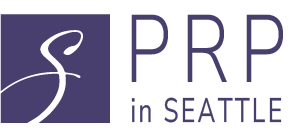Tendonitis is one of those frustrating injuries that lingers—whether it’s your elbow, shoulder, knee, or ankle. Traditional treatments like rest, anti-inflammatory medications, or physical therapy often bring temporary relief but may not solve the root problem. That’s where PRP for Elbow Pain Seattle have gained attention as a regenerative therapy that supports long-term healing.
At PRP in Seattle, this treatment is used to stimulate natural tissue repair, reduce inflammation, and help patients regain mobility faster. But how effective is it really? Let’s explore what the science says.
What Is PRP and How Does It Work?
Platelet-rich plasma (PRP) therapy uses your body’s own blood to accelerate the repair of damaged tendons. During the procedure, a small amount of blood is drawn and spun in a centrifuge to concentrate platelets and growth factors. These biologically active components are then injected directly into the injured tendon.
The goal of PRP isn’t to mask symptoms—it’s to trigger your body’s natural healing response. Platelets release signaling proteins that recruit stem cells, enhance collagen synthesis, and restore tendon strength and elasticity.
What Research Says About PRP for Tendonitis
Over the past decade, numerous clinical studies have evaluated PRP’s impact on chronic tendon injuries. Research published in journals such as The American Journal of Sports Medicine and Clinical Orthopaedics and Related Research has shown that PRP can improve pain, function, and tendon structure—particularly for tennis elbow, Achilles tendonitis, and rotator cuff injuries.
A 2021 meta-analysis found that PRP injections were significantly more effective than corticosteroids or placebo for long-term tendon healing and pain relief. Unlike cortisone shots, which only reduce inflammation, PRP helps repair microtears and stimulate new tissue growth.
Patients often begin to notice improvement within 4–6 weeks after treatment, with continued regeneration over several months.
Why PRP Stands Out Compared to Traditional Treatments
Conventional therapies—such as rest, bracing, or anti-inflammatory drugs—only manage symptoms. PRP goes deeper by repairing the underlying tendon damage. This makes it especially useful for people struggling with chronic tendonitis that hasn’t improved with standard care.
Compared to surgery, PRP is minimally invasive, requires no downtime, and carries a very low risk of complications since it uses the patient’s own blood. Most individuals resume normal activity within a few days, with gradual improvements over time.
Some benefits of PRP include:
-
Reduced pain and inflammation
-
Stronger, more flexible tendons
-
Quicker recovery for athletes and active individuals
-
Long-term tissue remodeling rather than temporary relief
Who Can Benefit from PRP Injections?
PRP therapy may be ideal for people with:
-
Tennis or golfer’s elbow (lateral or medial epicondylitis)
-
Achilles tendonitis
-
Patellar tendonitis (“jumper’s knee”)
-
Shoulder or rotator cuff tendonitis
Patients who want to avoid surgery or have not responded well to medications or physical therapy often turn to PRP treatment for tendon pain as a natural alternative.
At PRP in Seattle, specialists customize treatment based on the severity and location of the injury, ensuring optimal platelet concentration and targeted delivery.
What to Expect During and After PRP Treatment
The entire procedure typically takes about 45 minutes. After drawing and processing the blood, the PRP injection is carefully placed into the affected tendon under ultrasound guidance. Mild soreness may occur for a few days as the healing response begins, but this is a sign that regeneration is underway.
Patients are encouraged to rest the treated area for 48–72 hours, followed by gentle movement and gradual return to normal activity. Over the following weeks, collagen remodeling strengthens the tendon fibers, improving flexibility and pain levels.
Final Thoughts: The Future of Tendonitis Treatment
While PRP is not a “miracle cure,” growing research confirms its value as a safe and effective treatment for chronic tendonitis. It offers a biologic way to heal tendons from the inside out without relying on medications or surgery.
If you’ve been dealing with persistent tendon pain that limits your performance or daily life, Tendinitis treatment in Seattle could be the breakthrough you’ve been waiting for.
Ready to Learn More?
To see if PRP therapy is right for you, schedule a consultation with PRP in Seattle today. Discover how regenerative medicine can help you recover naturally and return to the activities you love.
Call (206) 279-2112 or visit PRP in Seattle to book your appointment.
